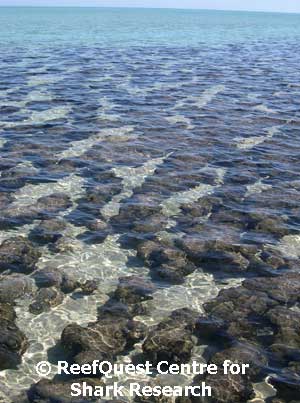Intertidal Zone:
Life Between the Tides
The ebb and flood of tides are the pulse of our planet. It is a pulse governed by the gravitational tug of the Earth’s single natural satellite, a silvery orb that inspires poets and lovers and whose effects on the waters beneath dominates the lives of seashore creatures. The region between high tide and low is termed the ‘intertidal’. It is a restless place of constant change and rich opportunity. For those hardy creatures who can adapt to the ceaseless demands imposed at the meeting of land and sea, theirs is literally the best of both worlds.
 When the waters recede, many creatures caught in tidepools are trapped
until the next high tide. During daylight hours, the sun relentlessly heats
these pools, causing ever more of the water to evaporate. Yet the dissolved
salts remain behind. In consequence, tidepool salinity increases sharply.
Because warm water is less able to hold dissolved gases than cold, a
tidepool’s oxygen content can fall to almost nil. These profound changes in
tidepool temperature, salinity, and dissolved oxygen content make intertidal
habitats demanding places to survive. However, many marine invertebrates and
even a few fishes are able to adapt or tolerate the physical challenges
imposed by tidepools.
When the waters recede, many creatures caught in tidepools are trapped
until the next high tide. During daylight hours, the sun relentlessly heats
these pools, causing ever more of the water to evaporate. Yet the dissolved
salts remain behind. In consequence, tidepool salinity increases sharply.
Because warm water is less able to hold dissolved gases than cold, a
tidepool’s oxygen content can fall to almost nil. These profound changes in
tidepool temperature, salinity, and dissolved oxygen content make intertidal
habitats demanding places to survive. However, many marine invertebrates and
even a few fishes are able to adapt or tolerate the physical challenges
imposed by tidepools.
Staring wide-eyed and gasping breathlessly, there are few things more pathetic and helpless than a fish out of water. Yet a number of fish species are able to traverse dry land, crawling laboriously between tidepools to take advantage of the rich feeding they often provide. Not to be left out, a few shark species can accomplish this neat trick as well.
